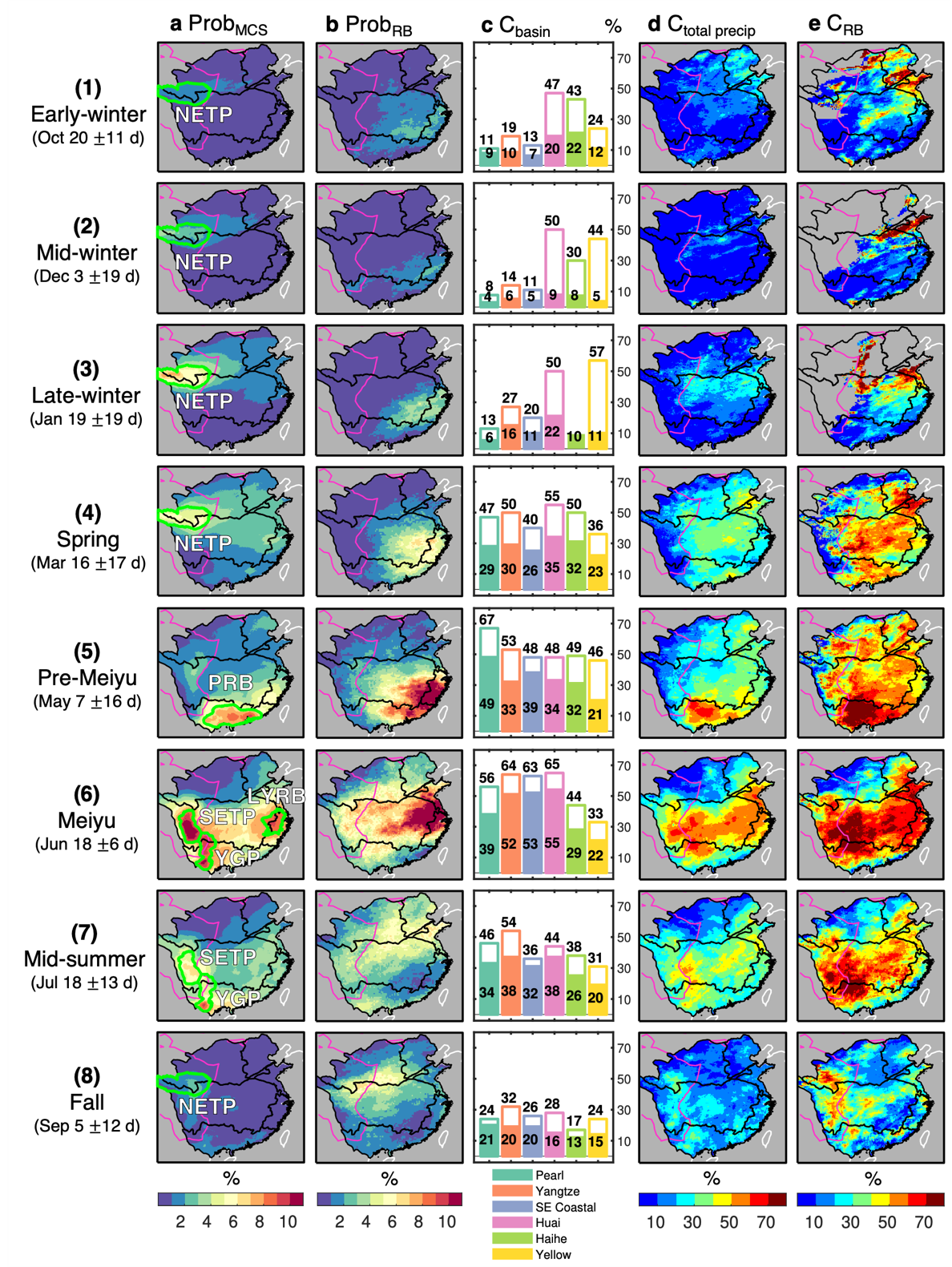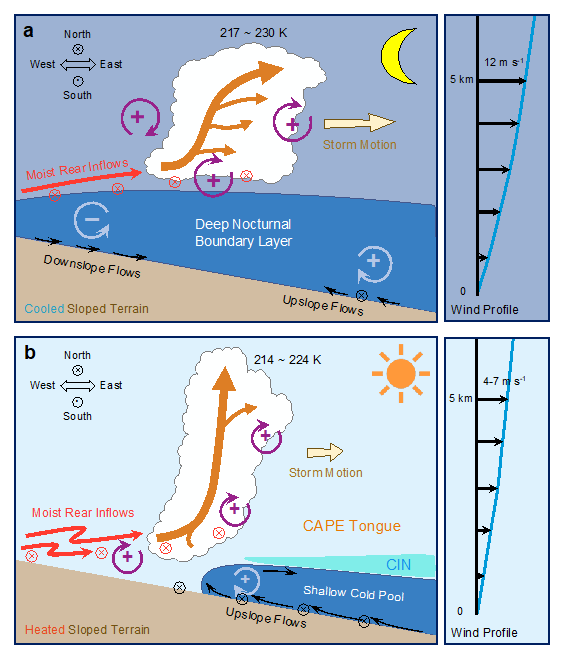A 20-year high-resolution database of mesoscale convective systems (MCSs) is established to fully depict their physical properties and the related flood risks in eastern China
Abstract
For the very first time, a 20-year high-resolution database of mesoscale convective systems (MCSs) in eastern China is established, from which two distinct regimes of MCSs throughout the year are discovered. The results shed light on subseasonal flash flood preparedness and adaptations as well as numerical weather simulations in eastern China.
Main
Eastern China has been one of the worst-hit regions globally by extreme rainfall and floods. One of the culprits is the mesoscale convective systems (MCSs)––heavy rainstorms featuring extensive stratiform clouds embedded with deep convective cores, which are at least 100 km in the horizontal scale and can last a few hours or longer. There has been an open question as to whether and how the physical properties and hydrological risks of MCSs change over the course of the year. This is attributed to the difficulty of resolving and tracking the lifecycles of those smaller-scale and potentially fast-moving weather systems.
To address this gap, Prof. Mengqian LU, Associate Professor of the Department of Civil and Environmental Engineering, and her students, Tat Fan CHENG, Qizhen DONG and Lun DAI, employed a hybrid tracking algorithm and high-resolution (4-km, half-hourly) satellite data to establish a long-term database of mesoscale convective systems (MCSs) in eastern China for the past 20 years.
Their results were recently published in the Journal of Geophysical Research: Atmospheres, entitled “A Dual Regime of Mesoscale Convective Systems in the East Asian Monsoon Annual Cycle.”
The paper highlights two contrasting suites of properties that MCSs exhibit throughout the year, coining the phrase “a dual regime.” In a nutshell, the wintertime regime features fast-propagating, nighttime MCSs with relatively shallow convection in a strongly sheared and relatively dry environment. By comparison, the summertime regime is characterized by an outbreak of strong, afternoon-initiated MCSs in the southern part of eastern China, propagating 2-3 times slower than the cold-season ones.
The discovery of a dual regime has important implications for regional water resource management, hazard preparedness and numerical weather simulations. The two regimes typically rotate upon the onset of the Pre-Meiyu and Fall stages, suggesting that an accurate prediction of large-scale monsoon onset is one of the prerequisites for proper simulations of smaller-scale rainstorms. Strong-rain spots triggered by the summertime MCSs reveal a coherent northward migration within the summer season. Such knowledge can be incorporated into subseasonal flash flood controls across the major river basins. Hydrologically, MCSs contribute to up to 50-60% of the normal or heavy precipitation during the pluvial Pre-Meiyu and Meiyu seasons. In the transition seasons, their contributions can still reach ~30-50% in heavy rainfall (Fig. 1), which may catch people off guard if the threats are not foreseen. The paper also generalizes the observed environments and the plausible physical processes for the MCS initiation based on the 20-year climatology and K-means clustering (Fig. 2), which can be useful for numerical model simulations and evaluation.


For more detail, the full article is now available online at https://agupubs.onlinelibrary.wiley.com/doi/full/10.1029/2022JD036523
The 20-year database of MCSs in eastern China can be accessed from https://doi.org/10.5281/zenodo.6519340
For inquiries or potential collaborations, feel free to contact Mr. Tat Fan Cheng (tfchengac@connect.ust.hk) or Prof. Mengqian Lu (cemlu@ust.hk).



